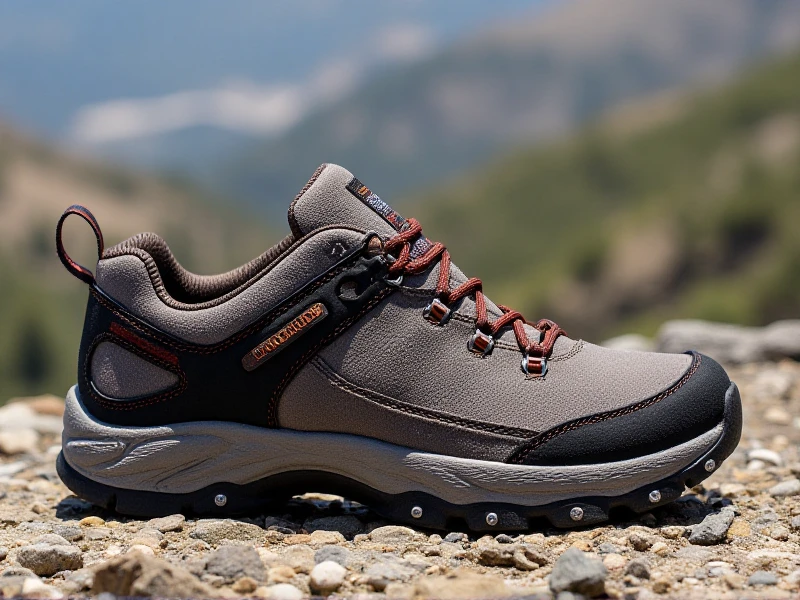Step into Adventure: Find Perfect Women's Hiking Shoes for Your Next Trek
2025-06-05

Choosing the right footwear is the foundation of any enjoyable hike. For women hitting the trails, women's hiking shoes offer a critical blend of support, stability, and comfort designed specifically for the female foot. With so many options available, finding the perfect pair can seem daunting. This guide breaks down the key considerations to empower you to make an informed decision, ensuring every step you take is confident and comfortable.
Why Specific Women's Hiking Shoes Matter
It's not just about colors or sizing. Women’s feet are anatomically different from men's – often narrower in the heel, with a wider forefoot and a different arch profile. Women's hiking shoes are engineered around these key differences:
1. Last Shape: The "last" is the mold the shoe is built around. Women-specific lasts are typically narrower at the heel, roomier around the ball of the foot, and accommodate a higher arch.
2. Cushioning & Support: Targeted cushioning often focuses on the forefoot where women tend to carry more weight during motion. Differentiated arch support aligns with the common female foot structure.
3. Fit Proportion: Insoles and midsoles are designed proportionally for typically lower body weight and different weight distribution.
4. Component Scaling: Elements like the heel counter, flex points, and the overall saddle (the material over the instep) are scaled to fit a smaller, narrower heel and ankle better.
Choosing a shoe built around these differences significantly enhances comfort, reduces blisters, and minimizes foot fatigue over long distances.
Navigating the Types: Shoes vs. Boots
The first major decision is height. What terrain and conditions are you tackling?
1. Hiking Shoes (Low-Cut): Ideal for:
Well-maintained trails
Day hikes with lighter loads
Warmer, drier conditions
Hikers valuing maximum flexibility and lighter weight.
Pros: Highly flexible, lightweight, ventilated, easy to move in. Feel more agile.
Cons: Offer minimal ankle support; less protection against debris like rocks or roots; less suited for unstable, rocky terrain or carrying heavier packs.
2. Hiking Boots (Mid/High-Cut): The workhorse for:
Rugged, uneven trails
Multi-day backpacking with heavier loads
Wet, muddy, or cold conditions
Trails requiring significant ankle stability.
Pros: Superior ankle support to prevent rolls; enhanced protection from elements and trail debris; better stability under load; often more durable.
Cons: Heavier, less flexible than low-cuts; thicker collars may take time to break-in; can be warmer (though waterproof versions mitigate dampness).
Performance Features to Look For in Women's Hiking Shoes
Beyond fit and height, prioritize these performance aspects:
1. Waterproofing Technology:
Essential: If hiking in damp grass, morning dew, puddles, rain, snow, or wet trails. Look for GORE-TEX® or similar waterproof, breathable membranes.
Alternatives: Non-waterproof ("water-resistant") mesh shoes offer superior breathability for hot, dry climates but won't keep your feet dry in immersion or extended rain.
2. Superior Traction: Outsole Matters
Deep, multi-directional lugs made of sticky rubber (like Vibram® Megagrip) provide exceptional grip on rock, roots, and slippery surfaces.
Look for aggressive patterns that shed mud efficiently.
3. Optimal Support & Protection:
Stiff Shanks: Nylon or composite shanks embedded in the midsole add torsional rigidity, protecting the arch on uneven terrain and providing platform stability.
Rock Plates: Thin, flexible protectors shield the forefoot from sharp rocks underfoot.
Robust Toe Caps & Heel Counters: Reinforced guards against impacts.
4. Breathability:
Crucial for comfort and preventing blisters. Mesh uppers breathe best. Boots with waterproofing need advanced membranes to allow sweat vapor to escape.
5. Cushioning & Responsiveness:
Midsole foams (like EVA, PU, or proprietary blends) absorb shock. Look for appropriate cushioning based on load and distance – more cushioning for heavier loads/longer hikes, slightly firmer for trail feel and stability on technical terrain.
Finding Your Perfect Fit: The Ultimate Guide
1. Shop Late: Feet swell throughout the day. Fit shoes in the afternoon or evening.
2. Wear Your Hiking Socks: Bring the specific thickness of socks you plan to hike in.
3. Toe Room is Crucial: Stand up. Ensure at least a thumb's width (roughly half an inch) between your longest toe and the end of the shoe. Your toes should wiggle freely.
4. Heel Lock: Your heel should sit firmly in the heel cup without slipping. Minor heel lift is okay in low-cut shoes while walking, but boots should lock it down.
5. Arch Support: The shoe's arch should align comfortably with yours. Significant pressure points or feeling unsupported are red flags.
6. Check Width: Ensure there's no tight pinching across the forefoot or little toe area. Many brands offer wide widths. Remember, feet do widen over time!
7. Break Them In: Never wear brand-new women's hiking shoes on a major hike. Wear them progressively around home, on walks, and then on short local trails to mold the footbed and soften materials.
Leading Brands for Women's Hiking Shoes/Boots (Examples):
Merrell: Known for great value, reliable comfort, and a broad range of fits (including wide).
Salomon: Offers exceptional grip and innovative technologies like their SensiFit™ & Contagrip® outsoles, often very lightweight.
KEEN: Famous for roomy toe boxes and excellent protective toe bumpers.
Lowa: Offers superb European craftsmanship, durability, and comfort-focused engineering.
Invest in Your Miles
The right women's hiking shoes are an investment in your enjoyment, endurance, and safety on the trail. By understanding your specific needs – terrain, load, foot shape, and hiking style – and carefully evaluating fit and features, you'll find the perfect pair. Step confidently into your next adventure, knowing your feet are protected, comfortable, and ready for every mile. Remember, great journeys truly begin from the ground up. Find your perfect fit and explore more.
Category: